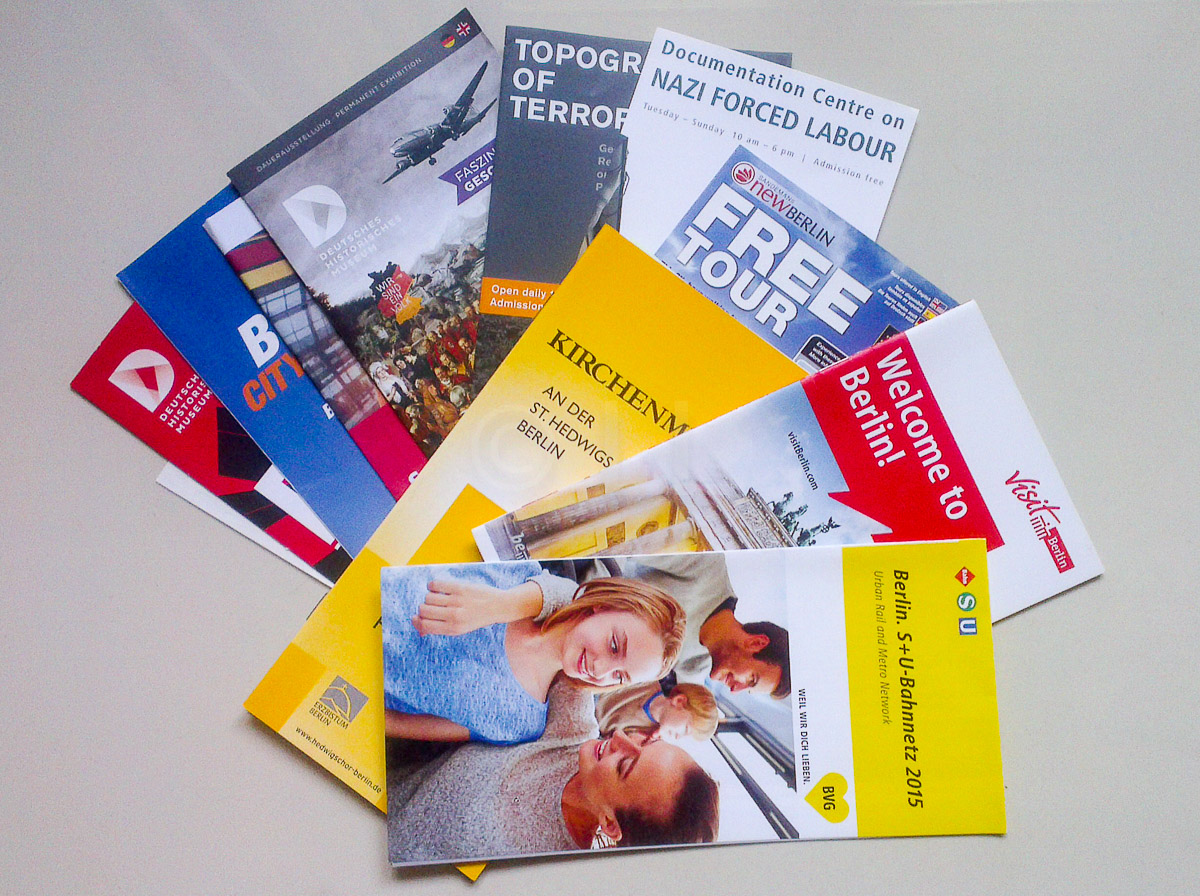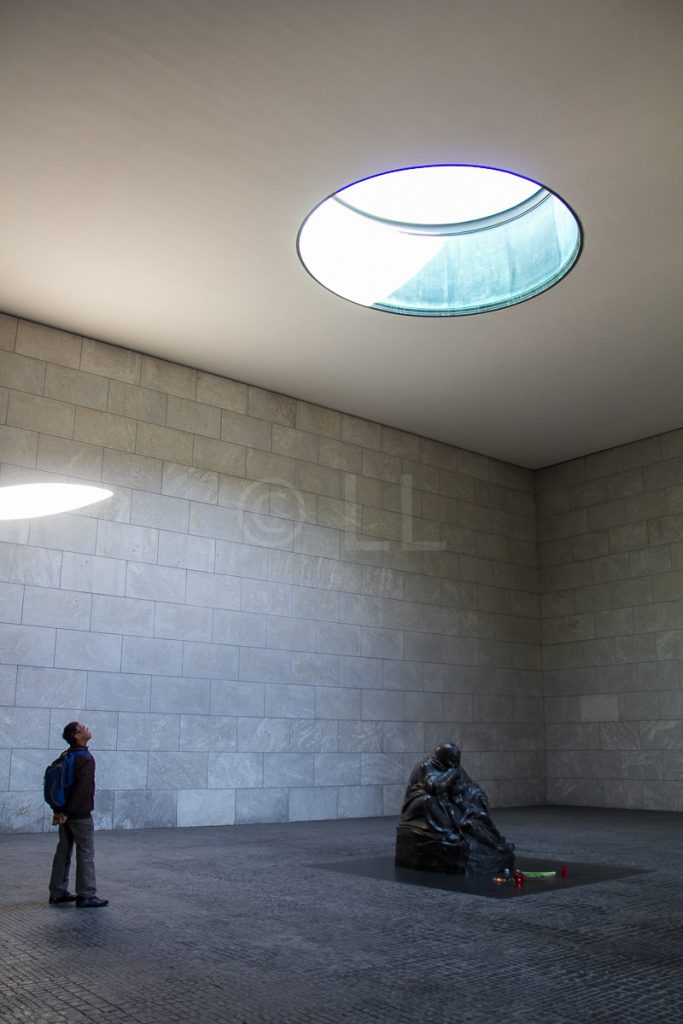Berlin in the Spring is definitely worth a visit, though mid March can still be pretty chilly, so you’ll need to pack a few warm clothes. We spent two nights in the city, which definitely wasn’t enough. We did manage to squeeze in almost two days of looking around though, as our onward trip was only in the evening and we were able to keep out Air BnB apartment until late afternoon.
It’s important to remember that much of Berlin was rebuilt after the Second World War as the city was extensively bombed. At the conclusion of the war, however, the city streets were cleared of rubble by women – most of the men were either dead or prisoners of war. There are some disputes about the numbers, but the bricks and stone that were reused in the rebuilding of the city were collected by these ‘rubble women’ known as the Trümmerfrauen, some of whom are still alive today. That said, the city fathers (gender non-specific here) have done a good job in rebuilding the city and it clean and very walkable.
5 Top tips if you’re time challenged
- Use public transport. The city is very spread out and has lots of ‘centres’. While you can walk around one, use public transport to move between them.
- Join a free walking tour – see below – to get your bearings and decide how to prioritise your itinerary
- Pick up some food from the supermarket – if you come by train, this is easy as the stations (at least the larger ones) seem to be well organised here. There are also plenty of markets to visit around the city.
- Visit at least one museum. There are many with each having a different focus.
- Walk! Keep your eyes open and you’ll discover something unexpected.
- Enjoy a concert at the Konzerthaus Berlin, the Berlin State Opera or Berliner Philharmonie which offers free foyer concerts on Tuesdays.
Getting around
 Go to the top floor of Berlin HBf for information and train system layout. We forgot to get a map of Berlin, but managed to collect one at the Information centre near the Brandenburg Gate. Got a bigger one from guide of the free walking tour which we joined the first morning after we arrived. Guided by self-employed free-lance guides, the free tours are promoted by Sandemans New Europe and Berlin Tours Original FREE Walking Tour, among others. (Tip as you please, we found our guide (Seb) excellent, it’s suggested you give €5-10 per person depending on your perception). Just turn up at the designated start point – ours was outside of the Starbucks in Pariser Platz, in front of the Brandenburg Gate – about 15 mins before the start time. Our Tour walked round the Gate, viewed Parliament The Reichstag, the Jewish memorial – there’s a museum underneath, free, open 24 hours.
Go to the top floor of Berlin HBf for information and train system layout. We forgot to get a map of Berlin, but managed to collect one at the Information centre near the Brandenburg Gate. Got a bigger one from guide of the free walking tour which we joined the first morning after we arrived. Guided by self-employed free-lance guides, the free tours are promoted by Sandemans New Europe and Berlin Tours Original FREE Walking Tour, among others. (Tip as you please, we found our guide (Seb) excellent, it’s suggested you give €5-10 per person depending on your perception). Just turn up at the designated start point – ours was outside of the Starbucks in Pariser Platz, in front of the Brandenburg Gate – about 15 mins before the start time. Our Tour walked round the Gate, viewed Parliament The Reichstag, the Jewish memorial – there’s a museum underneath, free, open 24 hours.
The city is large and spread out, with more than one ‘centre’ so if you are not able to find accommodation near what you want most to see, you will need to catch public transport. Our experience was positive, the stations (both trains and Underground systems) were conveniently placed for our needs and the system wasn’t too difficult to work out. But don’t forget that train system layout mentioned above. Check out the buses as well.
Eating on the street
Street Food – not a lot visible apart from those at Checkpoint Charlie (not the real one – that was torn down and rebuilt for tourists.) Guards are German and apparently are rather casual with the US flag. The photos above signify a Russian and a US soldier staring back at each other. The food in this area is aimed at a ‘passing by’ clientele and looked pretty ordinary and rather on the pricey side.
Better to find a small cafe and you’ll do better, both taste and price wise. We enjoyed our lunch (soup and beer) at Café Cum Laude, Humboldt University beside Gorky theatre. We found the prices reasonable, they also serve coffee and cake and have outside seating which would be lovely if the weather is warm.
We did get to
The Topography of Terror Museum is built on site of the old (destroyed by bombing) SS / Gestapo headquarters. On the western side of the Berlin Wall, a length of which runs in front. Also visible the old cellars from the SS buildings. Open 10am-8pm, free entry.
The Luftwaffe headquarters in Williamsburgstrasse, only major Reich building not destroyed by allied bombing, later used by Russians for not so nice purposes. Now apparently the tax office, so still not a ‘nice’ place! The site of Hitler’s Reich Chancellery is just round the corner, but the whole site is now covered by prefabricated buildings put up quickly after the partition of the city. Hitler’s Bunker is unmarked and below a carpark, it was destroyed by the Russians and filled in.
 The wonderful Museum Island is a UNESCO Heritage listed group of five wonderful museums housing a wide variety of cultural and archaeological artefacts. Although many were damaged in the war, you can see the bust of Nefertiti at the Neues Museum.
The wonderful Museum Island is a UNESCO Heritage listed group of five wonderful museums housing a wide variety of cultural and archaeological artefacts. Although many were damaged in the war, you can see the bust of Nefertiti at the Neues Museum.
To truly enjoy the museums would need a day for each, the others being the Pergamon Museum, Bode Museum, Alte Nationalgalerie and the Altes Museum. You can also visit the Berlin Cathedral, which overlooks the open space at the south end of the island.
 Not having the luxury of time, we decided to visit the German Historical Museum, which will give you a good overview of German history way back through the many changes of borders over the centuries. The Museum is housed in the Zeughaus, (the old Armoury) the oldest surviving building on Unter den Linden.
Not having the luxury of time, we decided to visit the German Historical Museum, which will give you a good overview of German history way back through the many changes of borders over the centuries. The Museum is housed in the Zeughaus, (the old Armoury) the oldest surviving building on Unter den Linden.
There is also a newer building at the rear of the main museum where you can find the museum shop and a number of more contemporary exhibitions.
We missed
Markets – There are a lot of markets in Berlin, The one we most wanted to visit was the Thursday night street food market. Sadly that will need another visit as we left Thursday evening. Weekends at the Museum Island are also a good opportunity to find market stalls and a quick search will turn up a number of choices of flea markets, so you can find one near you.
 The Reichstag Building – You can can go and have a look at the workings of the German parliament – the Dome and Roof Terrace are open most of the year, except for Christmas and New Years Eves and maintenance periods. The Glass dome looks down into parliament floor so you can see what’s going on, you must book tours online, beforehand. The tours are free, but you must register online to be sure of your place. Last minute requests are only available if spaces are available.
The Reichstag Building – You can can go and have a look at the workings of the German parliament – the Dome and Roof Terrace are open most of the year, except for Christmas and New Years Eves and maintenance periods. The Glass dome looks down into parliament floor so you can see what’s going on, you must book tours online, beforehand. The tours are free, but you must register online to be sure of your place. Last minute requests are only available if spaces are available.
Potsdam – The Capital of the Federal State of Brandenburg – it has its own Brandenburg Gate – lies just to the south west of Berlin and lay just outside the walls of West Berlin during the period of division. The city, which is easily accessible by train and road, has witnessed many important events throughout its long history including the Potsdam Conference at the end of World War 2.
Sachsenhausen Concentration Camp Memorial – one of the not so well known WW2 Concentration Camps, this one was already a camp for political prisoners before the war and continued as a centre after the war. Catch the train and allow most of the day for the trip.
We discovered
Many of the old buildings look as if they’ve been in place for a long time, so it can be difficult to tell which ones have been rebuilt – the first building you see looking east from the Brandenburg Gate is the Altona Hotel, which looks like it has a long history of stories behind it’s facade. In fact, it has a rather short history and its most interesting ‘story’ is one connected with Michael Jackson.
We found walking around the city we felt safe, the things we noticed most were lots of building renovations /constructions and many international visitors. The construction sites are quite well organised within the site with good quality scaffolding and most historical sites being rebuilt/ restored seem to have descriptions of what is happening e.g. raising the roof of the Opera House and the reconstruction / renovation of the St Hedwigs Catholic Cathedral next door.
We discovered the beautiful St Hedwigs Catholic Cathedral as we had to make a detour because of a construction barrier. The Cathedral shares the Bebelplatz in central Berlin with part of the Humboldt-University and the Opera House. We were first attracted by the beautiful and unusual modernistic stained glass windows and discovered we were able to go inside. The unique circular construction is not confined to just the dome, but throughout the interior of the building to the sunken area in the centre of the prayer hall, a very untraditional church layout. The beautiful Klais organ can be enjoyed at times other than during services, pick up a brochure from the table outside the door.
Just beside the Historical Museum, you can find the The Neue Wache which serves as the “Central Memorial of the Federal Republic of Germany for the Victims of War and Dictatorship” and invites introspection as you sit with the beautiful Käthe Kollwitz’s famous Pietà sculpture “Mother and her Dead Son”.
Stumblestones (Stolpersteine) are small brass plates set into the ground, commemorating the lives of those taken away by the Nazis between 1933 and 1945. The number is slowly growing, but it’s easy enough to notice them as you’re walking along the cobblestoned footpaths as they mark the last voluntary place of residence to those names on them.
and for a final note …
images © LL










This Post Has 0 Comments